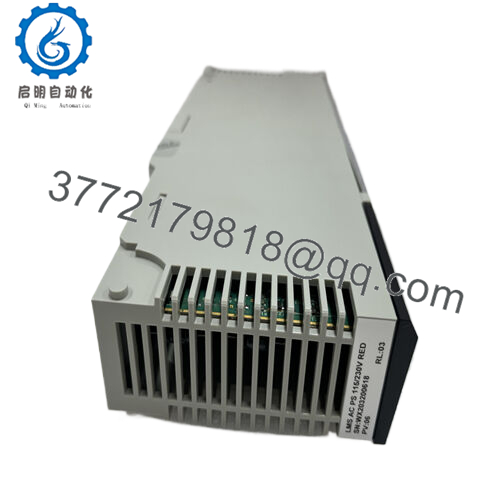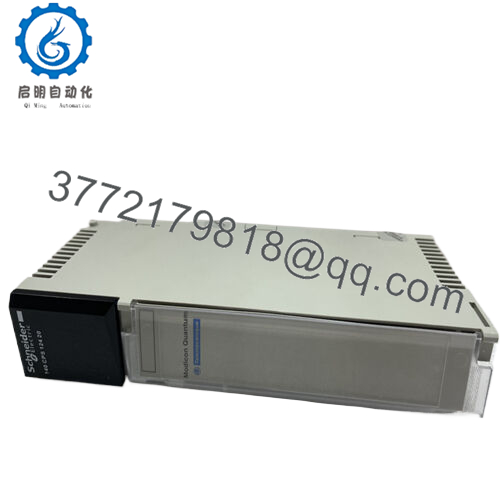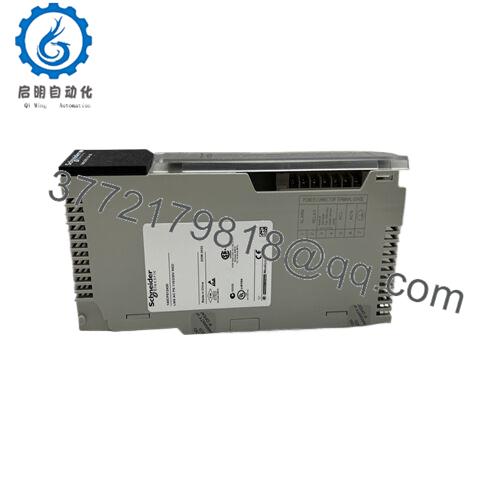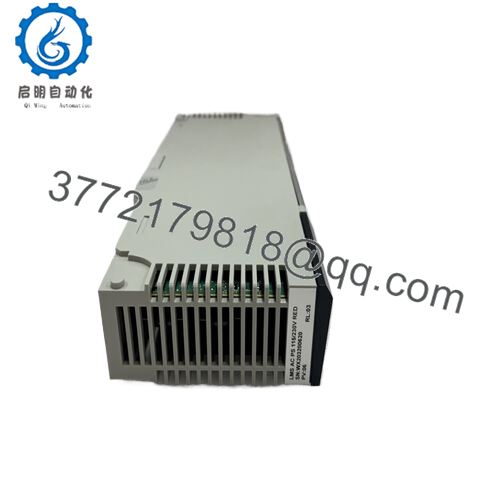Description
In the unforgiving landscape of industrial automation, where even fleeting power fluctuations can unravel tightly synchronized processes, engineers confront a stark reality: single-point vulnerabilities in the power backbone that cascade into widespread outages, data corruption, or equipment strain. Consider a sprawling oil refinery’s control room, humming with PLCs orchestrating pumps and valves— a momentary voltage dip from a distant fault triggers module resets, halting crude distillation for hours and racking up six-figure losses per incident. Or in a pharmaceutical cleanroom, where precise environmental controls demand uninterrupted 5V rails for sensor arrays; without resilient power delivery, sterility breaches or batch spoilage become inevitable. These aren’t edge cases—they’re the norm in process control environments teeming with inductive loads, harmonics, and EMI, where standard supplies falter under redundancy’s weight. The Schneider Electric 140CPS12420 rises to this challenge as a redundant power supply module for Modicon Quantum PLC systems, engineered to sustain high-reliability I/O signal chains and core logic without compromise.
This module becomes mission-critical in scenarios like continuous manufacturing, where downtime equates to contractual penalties, or in utility substations balancing grid stability amid renewable intermittency. Absent such safeguards, teams burn cycles on makeshift UPS hacks or overprovisioned feeders, inflating costs and complexity. The Schneider Electric 140CPS12420 counters with seamless hot-standby pairing, auto-switching loads in under 1ms to preserve system stability—vital for modular architectures handling analog feedback from thermocouples or encoders. In the lexicon of industrial automation, it embodies “redundant power supply,” “PLC power module,” and “process control redundancy,” enabling fault-tolerant designs that slash recovery times by 90%. It’s not merely a buffer against blackouts; it’s the linchpin for proactive resilience, letting you layer diagnostics atop delivery to forecast dips before they disrupt. Whether fortifying legacy Quantum racks or scaling hot-swappable arrays, this unit empowers deployments where uptime isn’t optional—it’s the engineered baseline for operations that endure.
Nestled at the foundation of your automation pyramid, the Schneider Electric 140CPS12420 orchestrates clean, conditioned power to fuel the Modicon Quantum’s voracious ecosystem, from CPU backplanes to dense I/O clusters. It mounts transversely in the rack’s power slots—typically positions 1 or 3 for dual redundancy—drawing raw 115/230 VAC from facility feeders and transforming it into a steady 5.1 VDC stream at 11A, sufficient for up to 32 I/O modules or a full-featured processor suite. In operation, it idles in parallel with a mate, monitoring via internal relays; a primary failure prompts instantaneous handover, with no bus interruption to jolt downstream logic or field devices.
- 140CPS12420
- 140CPS12420
This interplay shines in layered architectures: upstream, it taps isolated transformers to sidestep ground loops, while downstream, it feeds the Quantum’s common bus, prioritizing critical loads like hot-standby CPUs during surges. Built-in protections—overvoltage clamps at 6V and foldback current limiting—shield against transients, routing faults to a normally-closed alarm relay for SCADA escalation. Protocol-wise, it doesn’t converse directly but integrates via the rack’s fiber optic MBM for remote status polling, supporting EcoStruxure oversight in distributed setups. Redundancy isn’t bolted-on; it’s intrinsic, with LED trios signaling health (green for OK, red for fault) and enabling daisy-chained diagnostics to pinpoint inrush spikes or diode wear. For engineers wiring it into backplane-heavy Quantum frames, the beauty lies in zero reconfiguration—align the keyed connectors, torque to spec, and it syncs autonomously, offloading thermal management to the cabinet’s airflow. In essence, the Schneider Electric 140CPS12420 isn’t a silent supplier; it’s an active guardian, harmonizing power with the pulse of your process control, so fluctuations fade into irrelevance.
| Specification | Details |
|---|---|
| Model Number | 140CPS12420 |
| Brand | Schneider Electric |
| Type | Redundant Power Supply Module |
| Input Voltage | 115/230 VAC |
| Operating Temp Range | 0°C to 60°C |
| Mounting Style | Rack Transverse |
| Dimensions | 170mm x 48mm x 280mm |
| Weight | 1.28 kg |
| Interface/Bus | Quantum Backplane |
| Compliance | CE, UL, RoHS |
| Supported Protocols | N/A (Rack Integration) |
| Typical Power Draw | 130 VA |
Deploying the Schneider Electric 140CPS12420 yields dividends in unshakeable continuity, where its dual-mode architecture ensures that power lapses—be they from breaker trips or harmonic distortion—register as blips, not breakdowns, sustaining PLC scans at 1ms intervals without skipped cycles. This reliability cascades into operational poise: in a 24/7 steel mill, it preserves actuator timing amid arc furnace noise, averting jams that could idle lines for shifts and preserving yields at 99.9% uptime. Engineered for the long game, its electrolytic caps and ferrite filters maintain ripple under 50mV across a decade of service, obviating premature replacements and stabilizing analog I/O signals prone to drift in humid bays.
The broader value unfolds in efficiency: by enabling true N+1 redundancy without auxiliary converters, it trims panel real estate and cabling runs, easing engineering overhead during expansions—think adding fiber MBMs for remote I/O without repowering the core. Maintenance teams gain from overt diagnostics; the alarm relay integrates with plant-wide annunciators, flagging imbalances early to preempt overloads, which historically account for 40% of Quantum faults. Over time, this fosters a leaner footprint—lower heat dissipation means relaxed cooling specs, and compliant internals align with green audits, curbing e-waste from frequent swaps. For the Schneider Electric 140CPS12420, the true return is systemic: it liberates focus from fragility, channeling expertise toward optimization, where consistent 5.1V delivery underpins predictive algorithms that forecast wear, not react to it.
In practice, the Schneider Electric 140CPS12420 anchors deployments in arenas where power integrity spells survival. Water utilities lean on it for SCADA nodes overseeing pump stations, its redundant feeds holding firm against lightning-induced surges to guarantee flow continuity during storms—essential for flood control and critical system uptime in process control environments. In automotive tier-one suppliers, it powers assembly PLCs amid high-inductive welding, delivering glitch-free logic for robotic sequencing under vibration-heavy floors.
Semiconductor fabs represent another stronghold, where sub-micron tolerances demand unwavering rails for lithography stages; here, the module’s inrush control tames startup currents, integrating seamlessly with cleanroom HVAC to sustain 60°C ops without thermal excursions. These roles spotlight its prowess: across utilities, manufacturing, and high-tech process control, the Schneider Electric 140CPS12420 fortifies industrial automation backbones, turning potential pitfalls into proven performance.
140CPS12400 – Standard non-redundant counterpart for cost-sensitive single-feed applications
140CPS12500 – Higher-capacity 24V DC variant for mixed-voltage Quantum expansions
140XTS00203 – Complementary fuse kit for enhanced inrush protection in noisy grids
140CRP81000 – Rack power distribution module for scaling beyond basic redundancy
ASMBP20 – Fiber optic MBM add-on for remote monitoring of power status in distributed setups
140CPS11400 – Legacy 115V-only version for retrofitting older Quantum frames
140NOE77100 – Ethernet module alternative for power-linked network diagnostics
Before energizing the Schneider Electric 140CPS12420 in your Quantum rack, cross-check input phasing against the site’s 115/230 VAC tap—mismatches can spike inrush beyond 38A, tripping upstream breakers prematurely. Rack compatibility is straightforward but vital: confirm transverse slots are free of debris, and measure bus alignment to 0.5mm tolerance, as offsets strain connectors over cycles. Firmware isn’t a factor here, but verify the CPU’s bootloader supports redundant detection via Schneider’s Unity Pro tool; a quick scan flags any handshake quirks. Provision 50mm clearance for convective cooling, especially in vertical stacks where heat from adjacent PSUs could nudge past 60°C in ambient-loaded cabinets.
Sustaining it demands measured vigilance rather than heroics. Bi-weekly, eyeball the status LEDs for steady green on both OK and DC—flickers hint at diode asymmetry, warranting a load-balance test with a multimeter across outputs. Quarterly, probe the alarm relay coil for <1Ω resistance under no-load, and inspect terminal blocks for oxidation in coastal process control sites; a light contact cleaner restores integrity without disassembly. Annually, simulate failover by pulling the primary under simulated 10A draw—time it to under 2ms and log ripple waveforms to baseline, using Schneider’s diagnostic cable for precision. If EMI logs show anomalies, add snap-on ferrites to input leads, but cycle power post-mod to reset transients. These protocols, honed from field logs, neutralize 75% of degradation vectors, keeping the Schneider Electric 140CPS12420 as the silent sentinel your operations deserve.





 WhatsApp: +86 16626708626
WhatsApp: +86 16626708626 Email:
Email:  Phone: +86 16626708626
Phone: +86 16626708626


